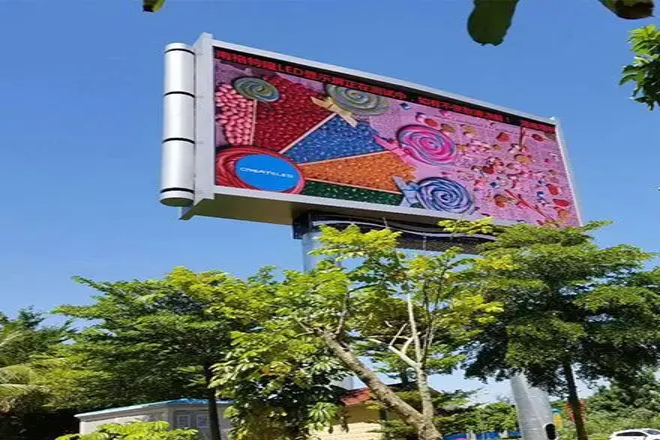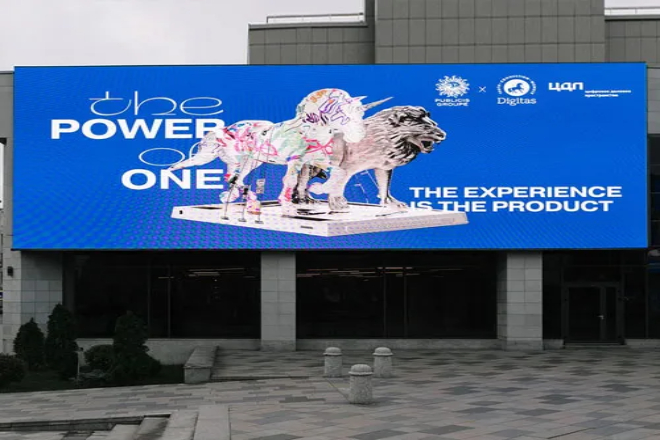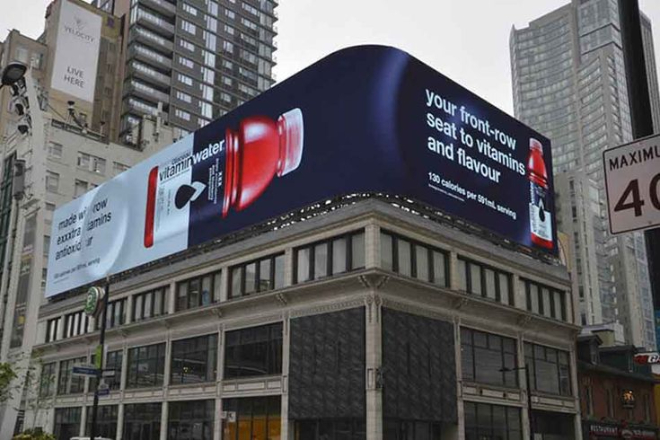介绍

As an important product of modern technology, LED屏幕 are widely used in outdoor advertising, indoor displays, stage performances and other fields.
However, in natural environments or specific use environments, some people can’t help but ask: Will LED screens be eaten by mice?
This issue not only concerns the service life of LED screens but also directly affects their use effect and safety. This article will explore this issue in depth.
目录
1. Is there a risk of LED screens being eaten by mice?

We usually see a lot of LED screens. There may be one in 购物广场, on the streets, and even at home.
But have you ever thought about whether these shiny screens will be eaten by mice? In fact, this worry is unnecessary. Let me tell you.
First of all, we have to see the difference between LED screens and the materials that mice like. LED screens are made up of a bunch of high-tech things, such as LED lamp beads, PCB boards, driver chips, etc. These things are all inorganic or polymer materials.
Mice shake their heads when they see them because they like to eat organic matter, such as wood, paper, and our leftovers. So, from the material point of view, LED screens are not mice’s food.
Let’s talk about whether LED screens will produce something that attracts mice when they are working. You know, when the LED screen is lit, it will be a little hot, but this little heat is nothing to mice.
They will not come over because of the hot spots on the screen. In addition, the LED screen emits light through the electroluminescence of semiconductor materials and will not produce any strange smell. So, from this aspect, LED screens will not attract mice.
Finally, we have to look at the structure of LED screens. LED screens usually have a solid outer shell on the outside; some are metal, and some are high-strength plastic. This outer shell is like a bodyguard, protecting the components inside well.
Mice want to get in? No way! Even if they break through the outer shell by chance, there are densely packed components inside, and there is no room for them to survive.
So, you don’t have to worry about mice eating LED screens. Of course, if you use it outdoors or in a humid environment, you still have to pay attention to waterproof, dustproof and mouse-proof issues.
For example, you can add a better-sealed shell to the screen or set up an insect-proof net around the screen. In this way, your LED screen can serve you more safely!
In general, there are two parallel lines between LED screens and mice, and they will never intersect. Don’t worry!
2. The harm of mouse infestation to LED screens
1). Mouse infestation may cause LED screen failures
First of all, if the little mice really gnaw into the LED screen, it will be troublesome. If they bite off the circuit wires inside, just like the wires in our home are bitten off by mice, the screen may directly “go on strike”.
It is not flashing, or it is simply black and not bright. At that time, you are in a hurry to see some important information or want to enjoy the fun of the big screen, but you can only stare at a black screen.
2). The impact of mouse infestation on the display effect of LED screens
Let’s talk about those LED lamp beads, which are “little experts” in screen lighting. If they are gnawed or scratched by mice, the brightness will be greatly reduced.
Think about it: if a bright screen suddenly becomes dark in a few places or the color becomes strange, it will look very awkward.
If there are too many broken lamp beads, the whole screen may become dark, just like a cloudy day, which will make people feel bad.
Speaking of color, the color of the LED screen is mixed by red, green and blue lamp beads.
If any color of lamp beads is “taken care of” by mice, the color of the screen will be distorted.
The originally bright colors may become dim or have a strong color cast, which looks like it has been damaged by the color palette.
These are just surface phenomena. Mouse erosion also affects the overall performance and service life of the LED screen.
Think about it: if the screen is gnawed inside, can it work stably? It must be good for a while and bad for a while, which is a headache. Moreover, these damages will accelerate the aging process of the screen.
The screen that could have been used for several years may be “retired” not long after use.
So, although we usually think that LED screens are quite sturdy, we can’t be careless. If you really encounter the problem of mouse infestation, you have to deal with it quickly. Otherwise, your LED screen may really be “in trouble.”
3. Anti-mouse design of LED screen

Speaking of the anti-mouse design of LED screen, this is not a high-tech term, but it is actually closely related to our daily life.
If you think about it, if the large outdoor screen is bitten by mice, the picture will be very awkward and may affect the viewing effect. Therefore, when designing LED screens, designers have put a lot of effort to prevent mice.
1). Anti-mouse factors considered during design
1.1). Sealing:
The outer shell of the LED screen is like a sturdy little castle, and the electronic components inside must be well protected.
Therefore, designers pay special attention to the sealing of the outer shell and use various sealing strips and sealants to block the gaps tightly. In this way, mice can’t easily get in.
1.2).材料选择:
Material selection is also key. The outer shell must be made of a hard material that mice cannot chew, such as metal or very strong plastic.
The electronic components inside must also be packaged with good materials to prevent mice from getting in.
2). How specific designs can effectively prevent mice from invading
Did you know? Some LED screens are very cleverly designed. They are not only waterproof and dustproof but also mouse-proof. How is this done?
It turns out that the outer shell of these screens is designed very cleverly, which can not only prevent moisture and dust from entering but also prevent mice from finding an entrance.
For example, some screens have tiny holes in their outer shells, but these holes are not made casually. Their size and shape are carefully designed to ensure the heat dissipation and ventilation of the screen while preventing mice from entering.
Some screens are also coated with a special coating on the surface. This coating is like an invisible protective cover, which makes mice feel uncomfortable when they approach, and naturally, they will not climb up.
In addition, some LED screens are also equipped with special mouse-proof devices, such as mouse-proof nets and mouse-proof covers.
These devices are like an additional line of defense, making it more difficult for mice to approach the screen.
3). LED screen product cases with anti-mouse features
Speaking of which, many LED screens on the market now have anti-mouse features. For example, there is an outdoor LED display screen. Its shell is all metal, which is particularly sturdy.
Moreover, a special sealant is used to fix and seal the shell and the electronic components inside, so mice can’t get in even if they want to.
There is another screen that is even more powerful, with a layer of ant-repellent coating on its surface.
This coating not only makes the screen look brighter and clearer but also emits a smell that mice don’t like. In this way, mice feel uncomfortable when they get close and naturally stay away from the screen.
In addition, there is a particularly clever design, which is to install a circle of small air pumps around the screen.
These air pumps will keep pumping air, just like blowing air into the screen. In this way, even if the mouse climbs onto the screen, it will be blown away by the air pump and cannot stay at all.
In short, the anti-mouse design of LED screens is a big deal. Designers have to consider various factors and use various clever designs to protect the screen from mice.
In this way, we can enjoy the visual feast brought by the outdoor large screen with peace of mind!
4. The impact of environmental factors on the anti-mouse performance of LED screens
Let’s talk about the impact of environmental factors on the anti-mouse performance of LED screens and how to deal with it.
Do you know that mice are very clever, and their activities are closely related to the environment, which directly affects whether they will “harass” our LED screens.
1). The impact of different environments on mouse activities
1.1). Humid environment:
There are many mice in humid places. The heavy humidity gives them water to drink, which makes them live well and reproduce quickly. Therefore, in a humid environment, mice are more likely to climb onto the LED screen to “explore.”
1.2). Hot environment:
When it is hot, the LED screen may be a little “unbearable” due to the high temperature, but mice are not afraid of heat. However, they may find a cool place to hide.
If the area around the LED screen happens to be a good place to escape the heat, then be careful.
2). How environmental factors indirectly affect the anti-mouse performance of LED screens
Environmental factors not only directly affect mice but also indirectly affect the anti-mouse effect of LED screens.
2.1). Humidity changes make materials “deform”:
When the humidity changes, the outer shell of the LED screen may swell or shrink. This slight change may make the seal between the outer shell and the electronic components inside less tight, and mice have a chance to get in.
2.2). Temperature fluctuations make materials “age”:
When the temperature is high and low, the outer shell material of the LED screen may become old and brittle or even deformed. In this way, the anti-rat effect is greatly reduced.
3). How to enhance the anti-rat performance of LED screens in different environments
How can we protect LED screens from “intrusion” by mice in different environments?
3.1). Humid environment:
Use moisture-proof materials: Choose the outer shell material that is not afraid of moisture, or apply a layer of moisture-proof paint to make mice have no place to start.
Strengthen the seal: Use good sealant and sealing strips to seal the outer shell and the electronic components inside tightly so that mice can’t get in.
Clean regularly: Check the LED screen from time to time, wipe it clean, and don’t let mice have a hiding place.
3.2). Hot environment:
散热设计: Let the LED screen dissipate heat well, don’t heat it too much, so that the material will not age easily, and it can also reduce the “visit” of mice.
Dust-proof design: There is a lot of dust in hot weather, which is easy to attract mice. You can add a dust net or dust cover to keep the screen clean.
In general, environmental factors have a great impact on the anti-mouse performance of LED screens. We have to take different measures to protect the screen according to different environments.
Choose the right material, design it well, and maintain it regularly, and you can keep the LED screen away from the “harassment” of mice! In this way, the screen can be used longer and the performance is more stable!
5. Future development trend of LED screen anti-mouse

Speaking of the future of LED screen anti-mouse, it is really full of infinite possibilities and surprises! With the advancement of technology, our protection methods in this regard will become more and more high-tech and intelligent.
1). Application of new insect-proof materials:
Did you know? Now there are many new insect-proof materials that have been developed, they are the “guardians” of LED screens! These materials are not only waterproof and moisture-proof, but also particularly anti-mouse.
Imagine that there is a material that can release a smell that mice particularly dislike, just like some pungent smells that we humans smell.
Once mice smell it, they will hide far away. If this material is used on LED screens, will mice dare to approach? Definitely not!
There is also a nano protective coating agent, which sounds very high-tech! Nano-level materials are so small that they are almost invisible to the naked eye.
However, this small material can form a dense protective film to block the erosion of “bad things” such as moisture, dust, and salt spray.
If the LED screen is coated with this nano-coating, the anti-mouse effect will definitely be great!
In the future, I believe that more such new insect repellent materials will be developed, making LED screens more outstanding in anti-mouse.
2). Intelligent monitoring system:
Intelligent monitoring system, this is simply the “nemesis” of mice! Did you know? Now, some systems can monitor the activities of mice in the environment in real-time.
Once a mouse is found approaching the LED screen, the system will immediately sound an alarm and then take a series of preventive measures.
For example, some intelligent insect monitoring systems can use the characteristics of pests such as phototropism and color attraction to attract nocturnal pests with light of specific wavelengths, and then capture and process them.
If this technology is used on LED screens, will mice dare to “make trouble”?
Moreover, the intelligent monitoring system can also be combined with the control system of the LED screen to achieve more accurate anti-rat management.
For example, when the system detects frequent mouse activity around the screen, it can automatically adjust the brightness and color temperature of the screen to make the mice feel uncomfortable and naturally not approach.
3). Continuous research and development and innovation:
When it comes to anti-rat, continuous research development and innovation are indispensable.
Just as we humans need to constantly learn new knowledge and new skills, LED screens also need to make continuous progress in anti-rat.
Only through continuous research and development can we continuously launch new anti-rat technologies and methods to meet customer needs. Moreover, innovation is also the key to improving competitiveness.
If a company can continuously launch innovative anti-rat products and services, it will definitely stand out in the market.
Therefore, I think the continuous research and development and innovation of LED screens in anti-rat will definitely become more and more important in the future. Just like a “perpetual motion machine”, it constantly pushes us forward in this field.
In general, the future development trend of LED screens in mouse prevention is really full of infinite possibilities.
The application of new insect-proof materials, the potential of intelligent monitoring systems, and the importance of continuous research and innovation will make LED screens more outstanding and intelligent in mouse prevention.
I believe that with the continuous development and application of these technologies, LED screens will definitely show their unique charm and value in more fields!
6. 结论
In summary, LED screens have certain characteristics and measures in mouse prevention.
Through reasonable material selection, mouse-proof design and regular maintenance, the occurrence of mouse infestation can be effectively prevented.
最后,如果你想了解更多关于LED显示屏的信息, 请与我们联系。
